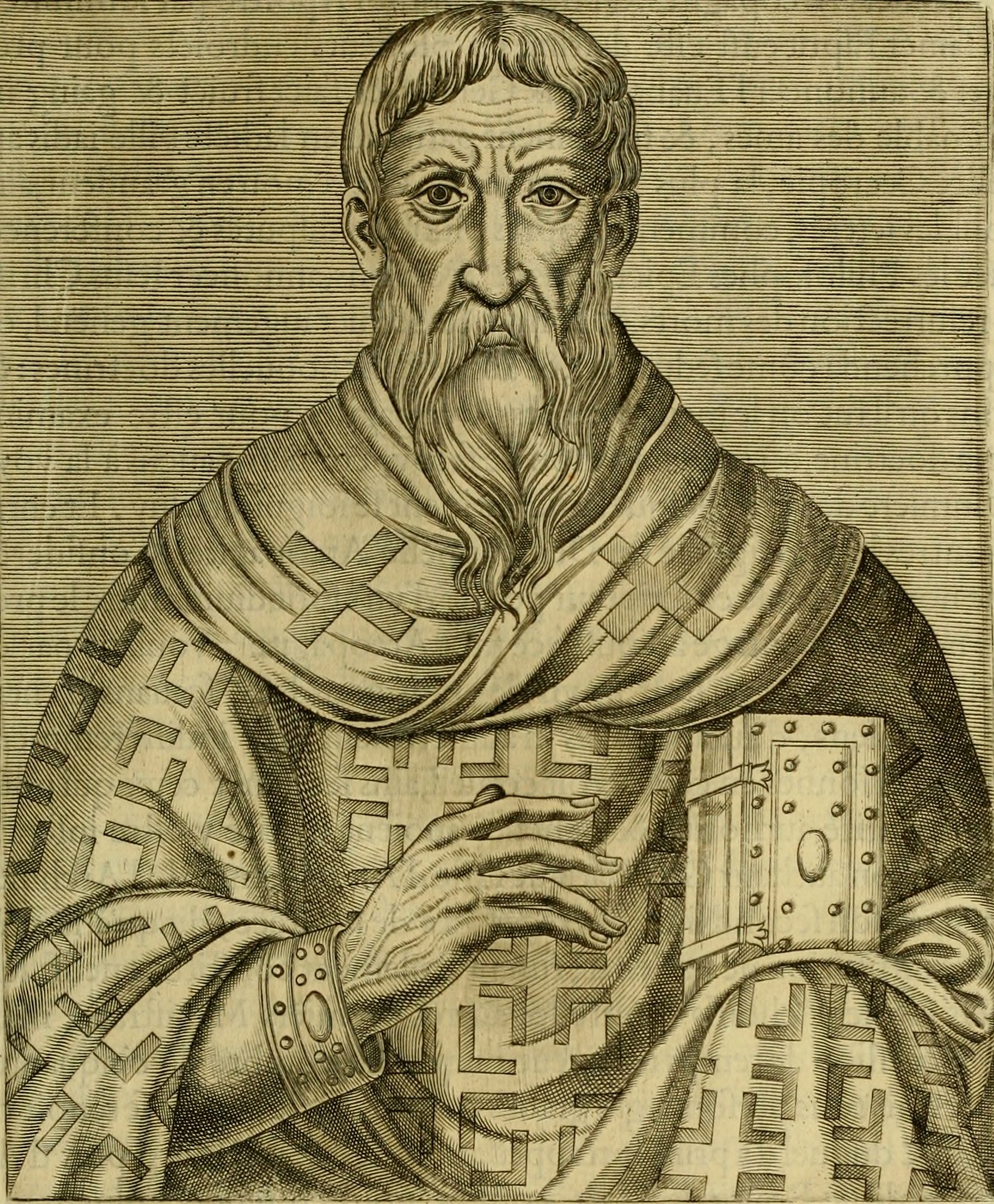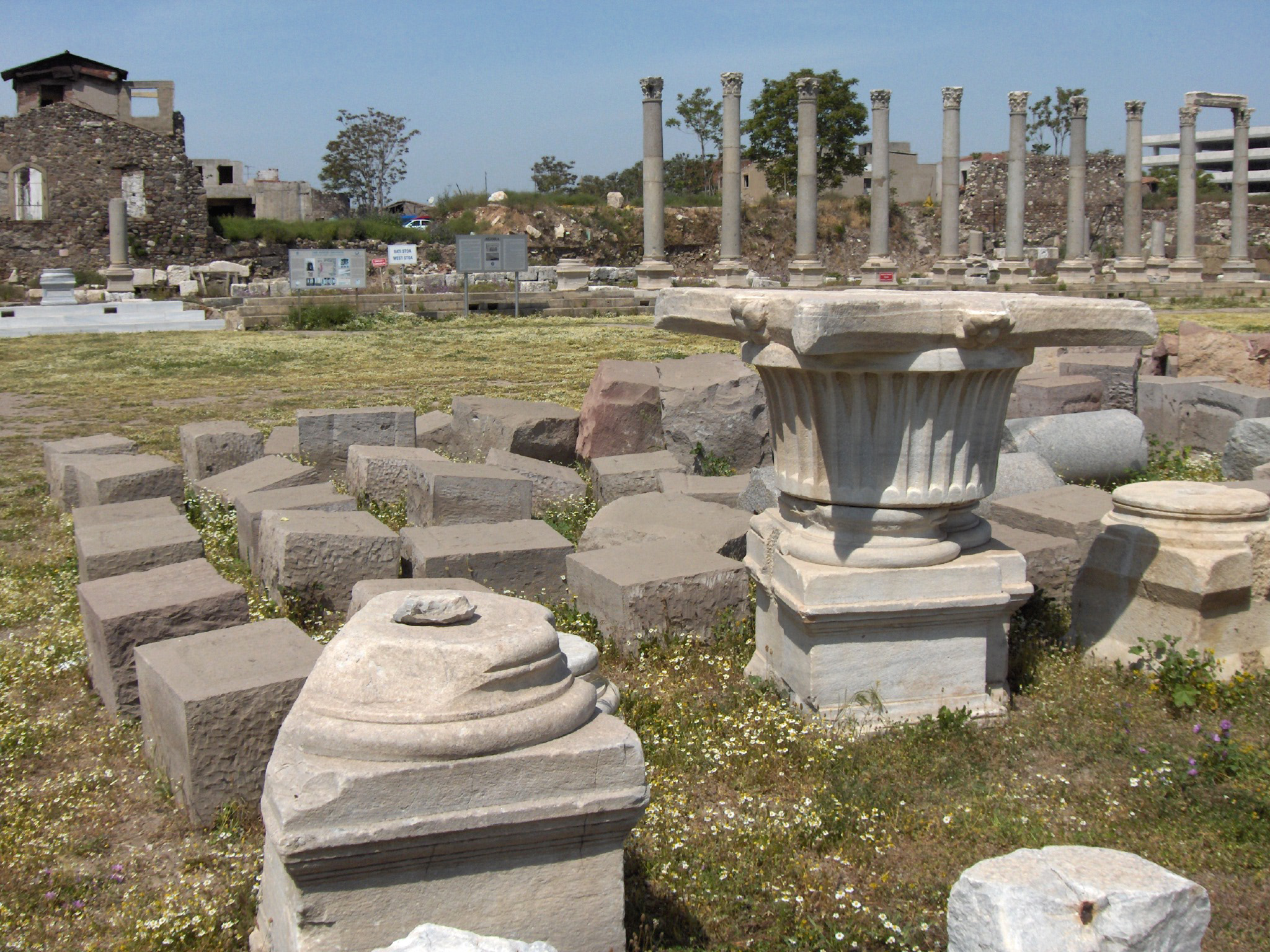|
Apollonius Of Tyana
Apollonius of Tyana ( grc, Ἀπολλώνιος ὁ Τυανεύς; c. 3 BC – c. 97 AD) was a Greek Neopythagorean philosopher from the town of Tyana in the Roman province of Cappadocia in Anatolia. He is the subject of ''Life of Apollonius of Tyana'', written by Philostratus over a century after his death. Life dates Apollonius was born into a respected and wealthy Greek household. His primary biographer, Philostratus the Elder (circa 170c. 247), places him circa 3 BCc. 97 AD, however, the Roman historian Cassius Dio (c. 155 – c. 235 AD) writes that Apollonius was in his 40s or 50s in the 90s AD, from which the scholar, Maria Dzielska gives a birth year of about 40 AD. Sources The earliest and by far the most detailed source is the ''Life of Apollonius of Tyana'', a lengthy, novelistic biography written by the sophist Philostratus at the request of empress Julia Domna. She died in 217 AD and he completed it after her death, probabl ... [...More Info...] [...Related Items...] OR: [Wikipedia] [Google] [Baidu] |
Tyana
Tyana ( grc, Τύανα), earlier known as Tuwana (Hieroglyphic Luwian: ; Akkadian: ) and Tuwanuwa ( Hittite: ) was an ancient city in the Anatolian region of Cappadocia, in modern Kemerhisar, Niğde Province, Central Anatolia, Turkey. It was the capital of a Luwian-speaking Neo-Hittite kingdom in the 1st millennium BC. Name The name of the city and the region, and later kingdom, surrounding it was in the Hittite and Neo-Hittite periods. By the Hellenistic and Roman periods, the city was named Tyana, which was derived from its earlier Hittite name. Location The location of Tyana corresponds to the modern-day town of Kemerhisar in Niğde Province, Turkey. The region around Tyana was known as Tyanitis, and it corresponded to roughly the same area as the former Iron Age kingdom of Tuwana, which extended to the Cilician Gates and the kingdom of Quwê in the south, and in the north was bordered by the region of Tabal, which is sometimes considered part of Tuwana. History Hitti ... [...More Info...] [...Related Items...] OR: [Wikipedia] [Google] [Baidu] |
Julia Domna
Julia Domna (; – 217 AD) was Roman empress from 193 to 211 as the wife of Emperor Septimius Severus. She was the first empress of the Severan dynasty. Domna was born in Emesa (present-day Homs) in Roman Syria to an Arab family of priests of the deity Elagabalus. In 187, she married Severus, who at the time was governor of the Roman province of Gallia Lugdunensis. They had two sons, Caracalla and Geta. A civil war over the Roman throne broke out in 193, and shortly afterwards Severus declared himself emperor. The war ended in 197 with the defeat of the last of Severus's opponents. As empress, Domna was famous for her political, social, and philosophical influence. She received titles such as "Mother of the Invincible Camps".; la, Mater invictorum castrorum. After the elder of her sons, Caracalla, started ruling with his father, she was briefly co-empress with Caracalla's wife, Fulvia Plautilla, until the latter fell into disgrace. Following the death of Severus in 211, Domn ... [...More Info...] [...Related Items...] OR: [Wikipedia] [Google] [Baidu] |
Spain
, image_flag = Bandera de España.svg , image_coat = Escudo de España (mazonado).svg , national_motto = ''Plus ultra'' (Latin)(English: "Further Beyond") , national_anthem = (English: "Royal March") , image_map = , map_caption = , image_map2 = , capital = Madrid , coordinates = , largest_city = Madrid , languages_type = Official language , languages = Spanish language, Spanish , ethnic_groups = , ethnic_groups_year = , ethnic_groups_ref = , religion = , religion_ref = , religion_year = 2020 , demonym = , government_type = Unitary state, Unitary Parliamentary system, parliamentary constitutional monarchy , leader_title1 = Monarchy of Spain, Monarch , leader_name1 = Felipe VI , leader_title2 = Prime Minister of Spain ... [...More Info...] [...Related Items...] OR: [Wikipedia] [Google] [Baidu] |
Italy
Italy ( it, Italia ), officially the Italian Republic, ) or the Republic of Italy, is a country in Southern Europe. It is located in the middle of the Mediterranean Sea, and its territory largely coincides with the homonymous geographical region. Italy is also considered part of Western Europe, and shares land borders with France, Switzerland, Austria, Slovenia and the enclaved microstates of Vatican City and San Marino. It has a territorial exclave in Switzerland, Campione. Italy covers an area of , with a population of over 60 million. It is the third-most populous member state of the European Union, the sixth-most populous country in Europe, and the tenth-largest country in the continent by land area. Italy's capital and largest city is Rome. Italy was the native place of many civilizations such as the Italic peoples and the Etruscans, while due to its central geographic location in Southern Europe and the Mediterranean, the country has also historically been home ... [...More Info...] [...Related Items...] OR: [Wikipedia] [Google] [Baidu] |
Ancient Greece
Ancient Greece ( el, Ἑλλάς, Hellás) was a northeastern Mediterranean civilization, existing from the Greek Dark Ages of the 12th–9th centuries BC to the end of classical antiquity ( AD 600), that comprised a loose collection of culturally and linguistically related city-states and other territories. Most of these regions were officially unified only once, for 13 years, under Alexander the Great's empire from 336 to 323 BC (though this excludes a number of Greek city-states free from Alexander's jurisdiction in the western Mediterranean, around the Black Sea, Cyprus, and Cyrenaica). In Western history, the era of classical antiquity was immediately followed by the Early Middle Ages and the Byzantine period. Roughly three centuries after the Late Bronze Age collapse of Mycenaean Greece, Greek urban poleis began to form in the 8th century BC, ushering in the Archaic period and the colonization of the Mediterranean Basin. This was followed by the age of Classical G ... [...More Info...] [...Related Items...] OR: [Wikipedia] [Google] [Baidu] |
Pseudepigrapha
Pseudepigrapha (also anglicized as "pseudepigraph" or "pseudepigraphs") are falsely attributed works, texts whose claimed author is not the true author, or a work whose real author attributed it to a figure of the past.Bauckham, Richard; "Pseudo-Apostolic Letters", ''Journal of Biblical Literature'', Vo. 107, No. 3, September 1988, pp. 469–94. In biblical studies, the term ''pseudepigrapha'' can refer to an assorted collection of Jewish religious works thought to be written 300 BCE to 300 CE. They are distinguished by Protestants from the deuterocanonical books (Catholic and Orthodox) or Apocrypha (Protestant), the books that appear in extant copies of the Septuagint in the fourth century or later and the Vulgate, but not in the Hebrew Bible or in Protestant Bibles. The Catholic Church distinguishes only between the deuterocanonical and all other books; the latter are called biblical apocrypha, which in Catholic usage includes the pseudepigrapha. In addition, two books cons ... [...More Info...] [...Related Items...] OR: [Wikipedia] [Google] [Baidu] |
Acolyte
An acolyte is an assistant or follower assisting the celebrant in a religious service or procession. In many Christian denominations, an acolyte is anyone performing ceremonial duties such as lighting altar candles. In others, the term is used for one who has been inducted into a particular liturgical ministry, even when not performing those duties. Etymology The word ''acolyte'' is derived from the Greek word ἀκόλουθος (''akolouthos''), meaning an attendant, via Late Latin ''acolythus''. Eastern Christianity In the Eastern Orthodox and Byzantine Catholic churches, the nearest equivalent of acolyte is the altar server. At one time there was a rank of minor clergy called the ''taper-bearer'' (κηροφόρος) responsible for bearing lights during processions and liturgical entrances. However, this rank has long ago been subsumed by that of the reader and the service for the tonsure of a reader begins with the setting-aside of a taper-bearer. The functions of an ... [...More Info...] [...Related Items...] OR: [Wikipedia] [Google] [Baidu] |
Damis
Damis ( el, Δάμις) was a student and lifelong companion of Apollonius of Tyana, the famous Neopythagorean philosopher and teacher who lived in the early 1st up to the early 2nd century AD. Life All that we know about Damis comes from Apollonius' biographer Philostratus who wrote his ''Life of Apollonius of Tyana'' between 217 and 238. Some scholars believe the notebooks of Damis are an invention of Philostratus, others think it was a real book forged by someone else and used by Philostratus. And some scholars think that Damis never existed at all. F.C. Conybeare, however, points out the extreme and unnecessary sceptism of this theory. E. Rabinovitch even advocates a high probability of the real existence of Damis' notebooks. It is possible that Philostratus did use a biography of Apollonius by Damis, who was however, not trustworthy (that is, he was like the so-called ''aretalogi'', sought to embellish the life of his master). According to Philostratus, Apollonius met Damis i ... [...More Info...] [...Related Items...] OR: [Wikipedia] [Google] [Baidu] |
Aeolis
Aeolis (; grc, Αἰολίς, Aiolís), or Aeolia (; grc, Αἰολία, Aiolía, link=no), was an area that comprised the west and northwestern region of Asia Minor (modern-day Turkey), mostly along the coast, and also several offshore islands (particularly Lesbos), where the Aeolian Greek city-states were located. Aeolis incorporated the southern parts of Mysia, and is bounded by it to the north, Ionia to the south, and Lydia to the east. Geography Aeolis was an ancient district on the western coast of Asia Minor. It extended along the Aegean Sea from the entrance of the Hellespont (now the Dardanelles) south to the Hermus River (now the Gediz River). It was named for the Aeolians, some of whom migrated there from Greece before 1000 BC. Aeolis was, however, an ethnological and linguistic enclave rather than a geographical unit. The district often was considered part of the larger northwest region of Mysia. History According to Homer's ''Odyssey'', Odysseus, after his st ... [...More Info...] [...Related Items...] OR: [Wikipedia] [Google] [Baidu] |
Aigai (Aeolis)
Aigai, also Aigaiai ( grc, Αἰγαί or ; la, Aegae or '; tr, Nemrutkale or '), was an ancient Greek, later Roman (Ægæ, Aegae), city and bishopric in Aeolis. Aegae is mentioned by both Herodotus and Strabo as being a member of the Aeolian dodecapolis. It was also an important sanctuary of Apollo. Aigai had its brightest period under the Attalid dynasty, which ruled from nearby Pergamon in the 3rd and 2nd century BC. The remains of the city are located near the modern village of Yuntdağı Köseler in Manisa Province, Turkey. The archaeological site is situated at a rather high altitude almost on top of Mount Gün (''Dağı''), part of the mountain chain of Yunt (''Dağları''). History Initially the city was a possession of the Lydian Empire and later the Achaemenid Empire when it conquered the former. In the early third century BC it became part of the Kingdom of Pergamon. It changed hands from Pergamon to the Seleucid Empire, but was recaptured by Attalus I of Per ... [...More Info...] [...Related Items...] OR: [Wikipedia] [Google] [Baidu] |
Maximus Of Aegae
Maximus (Hellenised as Maximos) is the Latin term for "greatest" or "largest". In this connection it may refer to: * Circus Maximus (other) * Pontifex maximus, the highest priest of the College of Pontiffs in ancient Rome People Roman historical figures * Quintus Fabius Maximus Verrucosus (c. 280–203 BC), surnamed ''Cunctator'', "the delayer" * Magnus Maximus, Roman emperor from 383 to 388 * Maximus of Moesia (fl. 89–117), twice consul * Maximus of Hispania (409–411), Roman usurper * Petronius Maximus (396–455), Western Roman Emperor, and was instrumental in the murders of magister miltium Authors and philosophers * Valerius Maximus, 1st-century historian * Claudius Maximus, 2nd-century Stoic, teacher of emperor Marcus Aurelius * Maximus of Tyre, 2nd-century Greek philosopher and rhetorician * Maximus of Ephesus (died 372), 4th-century philosopher, preceptor of emperor Julian * Ibn Arabi (1165–1240), Muslim mystic and philosopher, called Doctor Maximus * Maxim ... [...More Info...] [...Related Items...] OR: [Wikipedia] [Google] [Baidu] |


.jpg)



